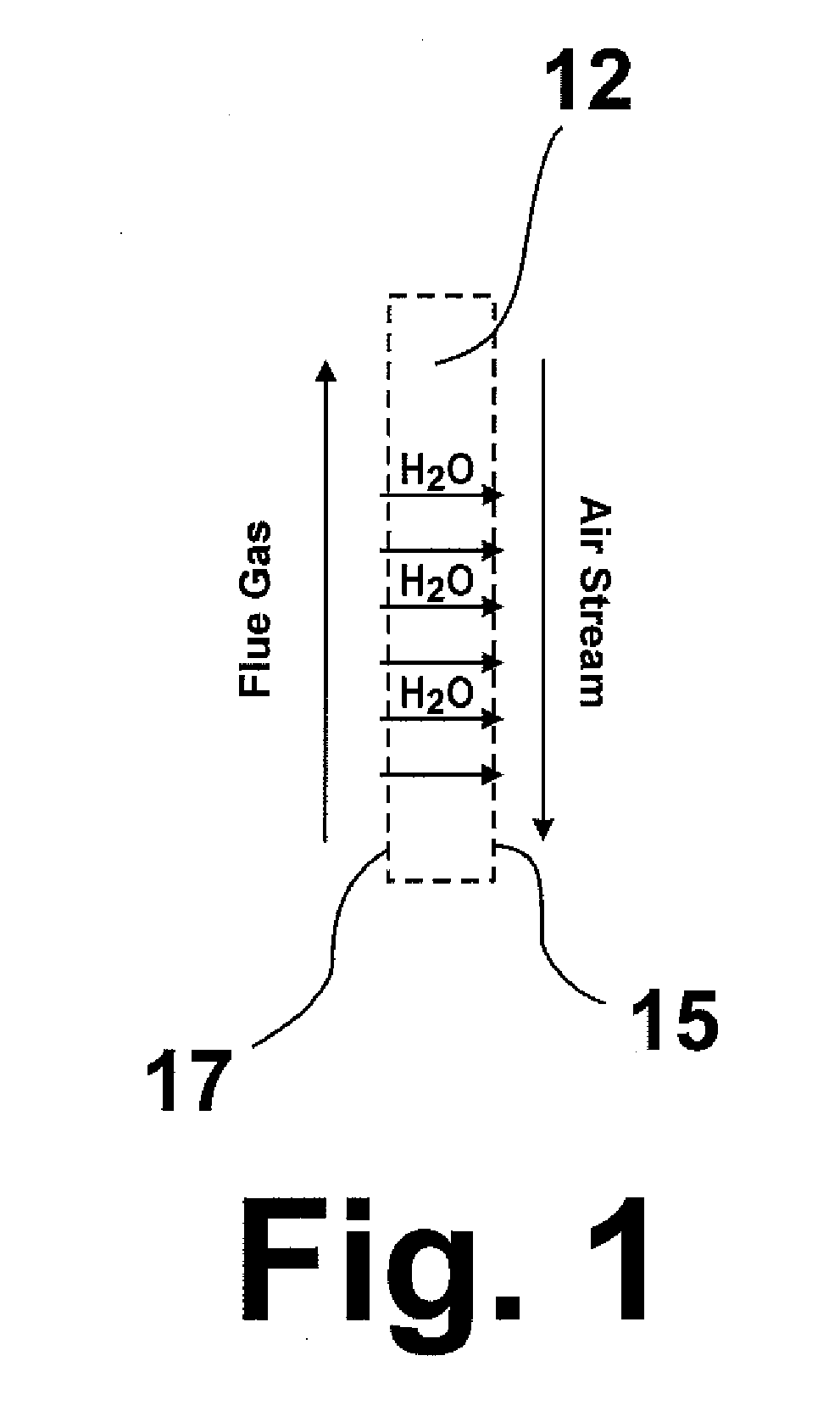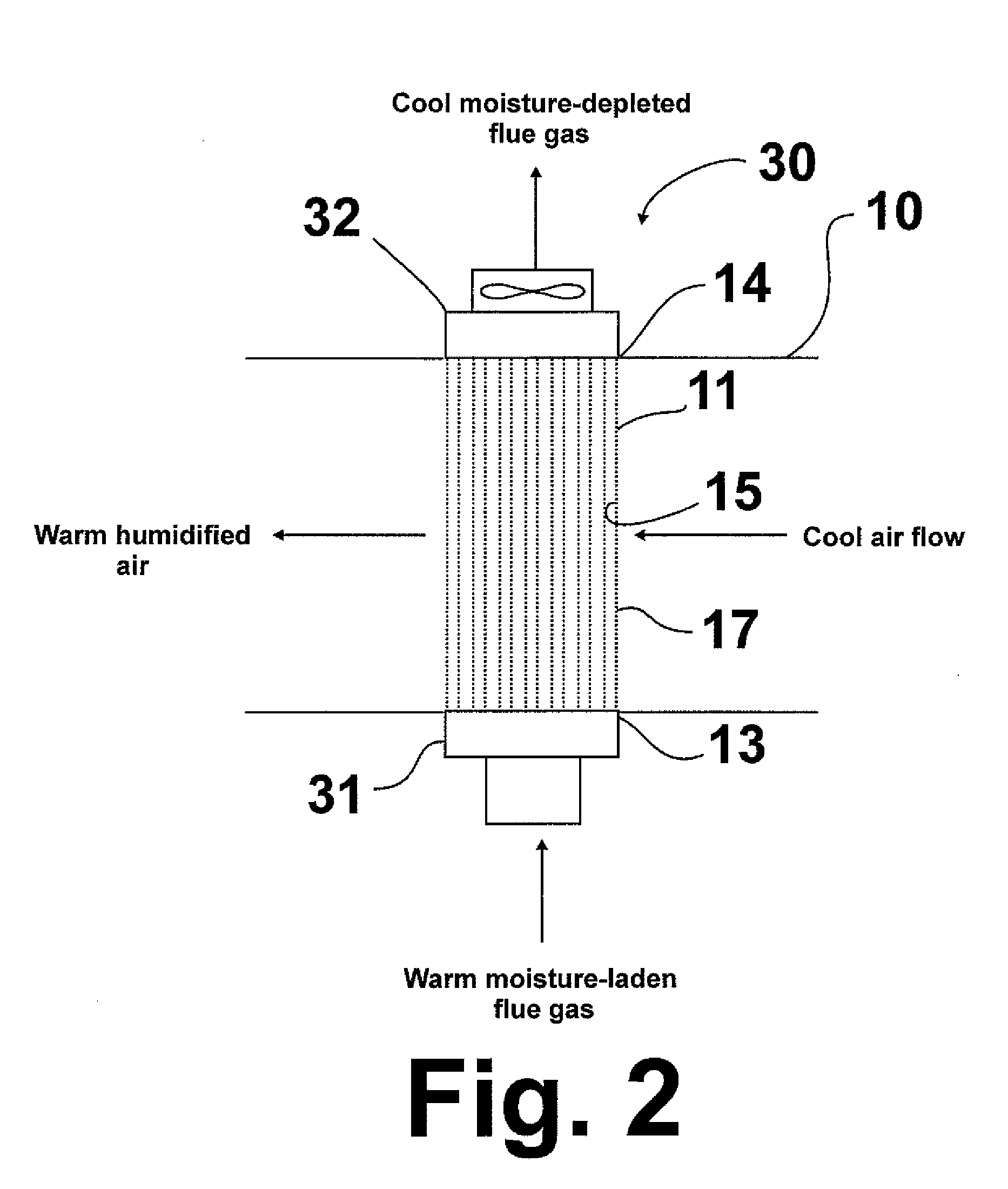Waterless humidifier for residential and commercial furnaces
- Summary
- Abstract
- Description
- Claims
- Application Information
AI Technical Summary
Benefits of technology
Problems solved by technology
Method used
Image
Examples
Embodiment Construction
[0019]The invention disclosed herein is a method and apparatus or system for environmentally conditioning spaces or rooms within buildings employing a transport membrane humidifier in which water vapor contained within a flue gas is transferred to the air in the spaces, thereby humidifying the air while blocking undesirable gaseous components in the flue gas from passing into the air, and in which the water vapor in the flue gas is the sole source for water used to humidify the air. The driving force for the water vapor to pass through the membrane is the water vapor partial pressure difference between the flue gas and the air to be humidified. That is, the water vapor partial pressure on the flue gas side of the membrane of the transport membrane humidifier is higher than the water vapor partial pressure on the air side of the membrane. The method and apparatus of this invention avoid the use of energy directly for water vaporization as required by traditional home and building hum...
PUM
 Login to View More
Login to View More Abstract
Description
Claims
Application Information
 Login to View More
Login to View More - R&D
- Intellectual Property
- Life Sciences
- Materials
- Tech Scout
- Unparalleled Data Quality
- Higher Quality Content
- 60% Fewer Hallucinations
Browse by: Latest US Patents, China's latest patents, Technical Efficacy Thesaurus, Application Domain, Technology Topic, Popular Technical Reports.
© 2025 PatSnap. All rights reserved.Legal|Privacy policy|Modern Slavery Act Transparency Statement|Sitemap|About US| Contact US: help@patsnap.com



